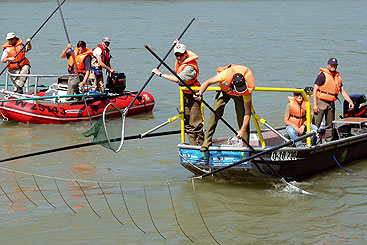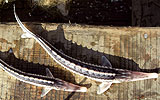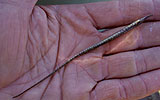Fishing the entire Danube in just 42 days

Fishing the entire Danube in just 42 days
A team of scientists from both the upper and lower Danube take on the extraordinary task of sampling the fish of the region in the first ever fish survey for the entire length of the Danube, part of the Joint Danube Survey 2.

Intensive electrofishing was done by core team and national teams to gain representative samples within one day.
Fish are a major biological quality element for the assessment of the ecological status in running waters. Realising that fish sampling would be crucial to the programme of the Joint Danube Survey 2 (JDS2), the ICPDR enlisted the Austrian Federal Agency for Water Management (BAW) and the University of Natural Resources and Applied Life Sciences, Vienna, to put together a fish survey for the JDS2. Generously supported by BAW with know-how, manpower and money, the ambitious project managed to do what no one had done before: to collect fish samples from all along the entire Danube and its tributaries – and to do it in a month and a half.
Under the coordination of Niels Jepsen of the EC Joint Research Centre in Ispra, the core fishing team was equipped with a vessel and electrofishing gear. The core team worked alongside the national teams to guarantee comparable sampling methodology and benefit from local knowledge while speeding up the sampling procedure. One day was allowed for each site, and each of the test reaches was sampled using electrofishing by day and by night, since it was agreed that night fishing would effectively detect additional species and age classes. Drifting trammel nets were used for deeper areas and, although time consuming, delivered the only sturgeon specimens caught during the survey.
Welcome and unwelcome species. In total, over 64,000 individual fish were caught and measured, consisting of 71 separate species – 66 species in the Danube and 58 in the tributaries. Although common species like bleak and Prussian carp dominated the catches, asp occurred at almost all sites along with ide, roach and pikeperch, and some unwelcome species as well.
ausTRIaN fedeRal ageNcy foR waTeR MaNageMeNT
Founded in 1995, the Federal Agency for Water Management (Bundesamt für Wasserwirtschaft – BAW) supports the Austrian Ministry of Agriculture and Forestry, Environment and Water Management. It develops the fundamentals for water management legislation in Austria. The BAW ensures the Austria-wide use of unified standards of biological monitoring. BAW experts are active consultants and educators, and a pilot project on management innovation has been set up at the BAW.
For more information, please visit: www.baw.at.
In the last ten years, the regulated upper and middle section of the Danube – wherever artificial bank protection is abundant – has been heavily colonised by invasive fish species, especially gobies from the Black Sea. “It was surprising to find the Chinese sleeper, an invasive fish species native to the Amur River,” says Grigore Davideanu of the Romanian Natural History Museum. “We knew that it was present in some waters in northeast Romania but we hoped it would need more time to get to the southwest.”

For stellate sturgeon and other large migratory sturgeons, the two Iron Gate dams represent an insurmountable barrier on their way upstream to distant spawning areas in the Hungarian lowlands.
Potential for recovery. A number of rare, threatened species are missing from the survey’s list, including large migrating sturgeons, which are at risk from poaching, or the European mud-minnow, which depend on muddy floodplain backwaters. But results clearly demonstrate that species diversity along the Danube is high, and recovery seems possible. However, the abundance of formerly dominating species like nase, dace, barbel or bream is a cause for concerns, since their numbers reflect habitat availability. To achieve a good ecological status as required by the EU Water Framework Directive, we have to act now to enhance river connectivity and protect spawning grounds and sheltered habitats for young fish.

A new menace for native species – the Chinese sleeper goby.
Only the beginning. Despite the difficulties of the survey, the core team is already thinking about future fish surveys, although without the confines of the JDS2 schedule. “A stand-alone Danube fish survey would be more effective, since fish sampling demands a totally different time regime and strategy,” says Gabor Guti of the Hungarian Danube Research Station. “A larger international team with well-advised local experts and two sampling boats are essential.”

Blackstriped pipefish managed to pass both Iron Gate dams and was found between submersed plants at river km 960.
But all team members agree that the most important outcome was the international cooperation. “JDS2 and the fish survey was a unique opportunity for fish scientists along the Danube to exchange information on equipment and sampling strategies,” says Christian Wiesner of the University of Natural Resources and Applied Life Sciences, Vienna. “It was the first step towards a standardisation of fish sampling and assessment methods on large rivers in Europe.”
For the complete scientific report, please visit:
http://www.icpdr.org/jds/publications.





